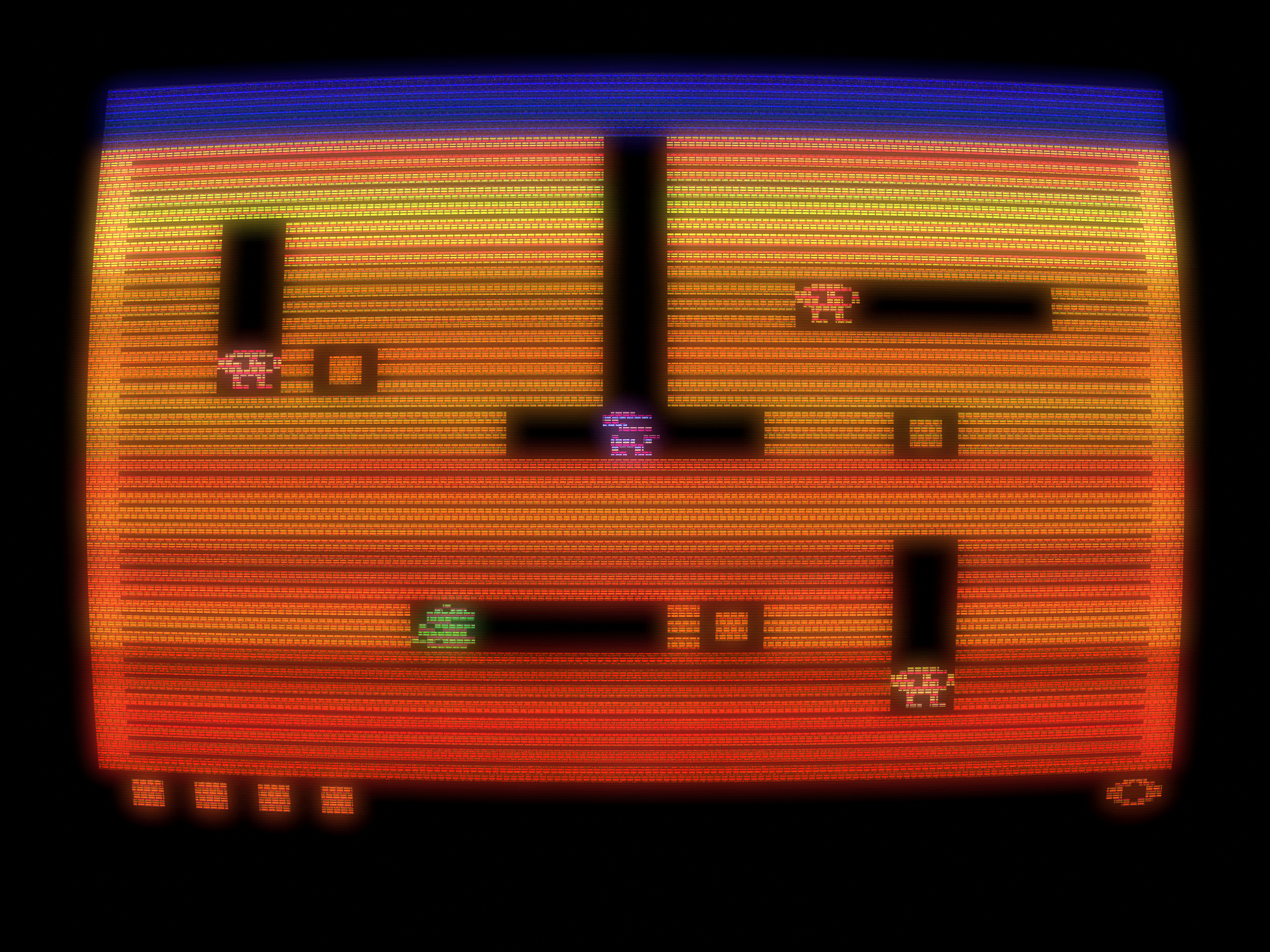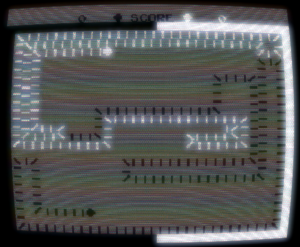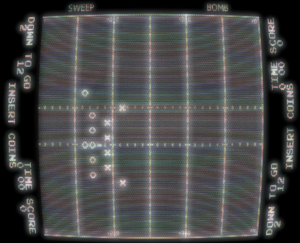 The Game: You are Dig Dug, an intrepid gardener whose soil is infested with pesky Pookas and fire-breathing Fygars. You’re armed with your trusty pump, which you can use to inflate your enemies until, finally, they blow up. But both the Pookas and Fygars can crawl through the ground and can pop out into your tunnels, and if a Fygar sneaks up behind you, he can toast you if you’re not careful. (Atari, 1983)
The Game: You are Dig Dug, an intrepid gardener whose soil is infested with pesky Pookas and fire-breathing Fygars. You’re armed with your trusty pump, which you can use to inflate your enemies until, finally, they blow up. But both the Pookas and Fygars can crawl through the ground and can pop out into your tunnels, and if a Fygar sneaks up behind you, he can toast you if you’re not careful. (Atari, 1983)
Memories: Fresh from the arcade, one of the first fruits of Atari’s new licensing deal with Namco (which also yielded the hits Pole Position and Xevious) was this deliriously cute new take on the maze craze, in which you created your own maze – not that you or anything else in the game were obliged to stick to the confines of that maze, mind you. Atari quickly turned out home versions of Dig Dug for the 2600 and the 5200 consoles, as well as their 8-bit computers and other systems.
This version is one of the most fun, even if others outstrip it from an audiovisual standpoint. If there’s one flaw with 2600 Dig Dug, it’s that the game is too easy compared to the arcade version. A single game, with little practice, can stretch on forever – or until you get bored and shut the machine off. On the other hand, with the seemingly young target audience for such a cutesy game, perhaps that longevity is the key to Dig Dug being as popular at home as it was in the arcade.
 This version of Dig Dug hails from a brief silver age of 2600 greatness: a lot of the arcade ports from this era were really, really good. What was the secret? Atari had begun outsourcing much of this work to General Computer, a small outfit run by two college students who got their start creating less-than-licensed “enhancement kits” for arcade machines such as Pac-Man and Missile Command. Threatened with legal action from such major players as Atari and Midway, Kevin Curran and Doug Macrae stepped up to the plate to cut some unusually ballsy deals: they offered to make an official enhancement for Midway’s Pac-Man, an enhancement which eventually became Ms. Pac-Man, and they worked a deal with Atari under which they would receive $50,000 a month for two years in exchange for first refusal rights to any games they created.
This version of Dig Dug hails from a brief silver age of 2600 greatness: a lot of the arcade ports from this era were really, really good. What was the secret? Atari had begun outsourcing much of this work to General Computer, a small outfit run by two college students who got their start creating less-than-licensed “enhancement kits” for arcade machines such as Pac-Man and Missile Command. Threatened with legal action from such major players as Atari and Midway, Kevin Curran and Doug Macrae stepped up to the plate to cut some unusually ballsy deals: they offered to make an official enhancement for Midway’s Pac-Man, an enhancement which eventually became Ms. Pac-Man, and they worked a deal with Atari under which they would receive $50,000 a month for two years in exchange for first refusal rights to any games they created.
They didn’t realize that Atari, flush with money at the height of its market dominance, was trying to pay them to drop out of the industry, not deliver new product. Within 90 days of finalizing that unusual deal, Macrae and Curran submitted an arcade game called Food Fight to Atari. Impressed with the skills demonstrated by the two college students, Atari continued to infuse their fledgling company with cash and handed them the task of porting popular arcade games to the Atari 2600 and 5200. Many of the best titles from the “silver label” era were the work of General Computer, including Joust, Moon Patrol,  Pole Position, Dig Dug, and even the founding duo’s own exceptional home version of Ms. Pac-Man.
Pole Position, Dig Dug, and even the founding duo’s own exceptional home version of Ms. Pac-Man.
Incidentally, General Computer is still around today – which is more than one can say for the Atari regime that thought they could be paid to sit quiet and not compete in the market.



